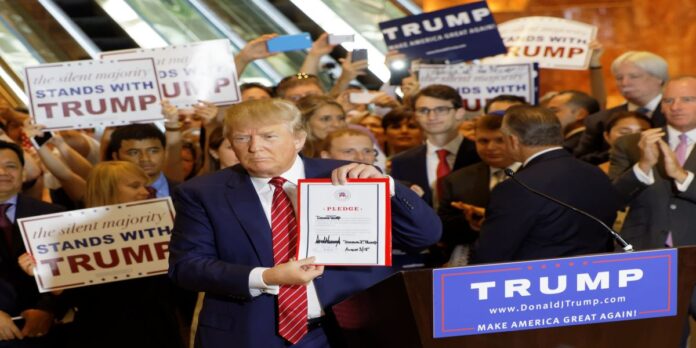On February 4, Elon Musk, the world’s richest man and now US President Donald Trump’s ‘efficiency’ czar, posted a message on the site formerly known as Twitter, addressed to the American people. “We’re never going to get another chance like this,” wrote Musk. “It’s now or never. Your support is crucial to the revolution of the people.”
Musk has been polishing and amplifying the Trumpian ideological project. His words make it clear that what Trump is attempting is not mere disruption of established norms but a counter-revolution in the Western world.
American power and money underwrote this revolution. America has remade the West from a reactionary grouping of warring, imperialist powers into a transcontinental zone of peace and prosperity where humans—unburdened by history and tradition—have pushed the boundaries of innovation, individuality, and sexuality.
Trump is attempting to end this revolution.
His inaugural speech was marked by concepts and metaphors from 19th-century America: ‘history’s greatest civilisation’, full of ‘courage’, ‘vigour’, ‘vitality’, and a ‘frontier spirit’, following its ‘manifest destiny’. An America that increases its wealth and, very tellingly, expands its territory. His hero is the last American president of the 19th century, William McKinley.
He would like to be freed from the commitment to guarantee the security of the West and its allies—across North America, Europe, and East Asia.
America has dominated the Western hemisphere for well over a century. But over time, it has camouflaged that dominance and reduced its interventionism, particularly in South America. Trump’s announcements about incorporating Canada as the USA’s 51st state, taking back the Panama Canal, and buying out Greenland are bringing back the doctrine of the sphere of influence.
He does not want America to be bound by international rules and laws. He has withdrawn the country from major UN bodies on human rights, climate change, refugee relief, and global public health. He has also sanctioned the International Criminal Court, the leading pillar of international law.
He does not appear interested in helming a global capitalist order either. He is using tariffs as a weapon not just to balance America’s trade but also to coerce its leading trade partners, including allies—Canada, Mexico—into helping him curb illegal immigration and the inflow of deadly drugs.
Tariffs are coming for the European Union (EU). The EU will be pressured to cede Greenland, take ownership of the Ukraine war, and do more for its own security.
All these measures are bringing an end to the so-called rules-based order, which official America swore by just a few months ago.
But it is what Trump is attempting in the realm of society and culture that shows the depth of his ambition.
Economic and political systems, as well as foreign policy, rest on society and are shaped by culture. Social and cultural changes are the hardest to bring about, but these are the changes that make a revolution enduring.
There is plenty of suggestive evidence that a motivation behind his crackdown on illegal immigration is to put a pause on America’s increasing racial diversity.
The symbolism of the contrast between the current and former White House Press Secretaries—the white Karoline Leavitt and the black Karine Jean-Pierre—is hard to miss.
Diversity, equity, and inclusion policies are, to put it mildly, out of favour.
Europe’s openness to racial diversity does not sit easily with Trump’s supporters. Elon Musk has already begun a chant of “Make Europe Great Again,” extending the “Make America Great Again” agenda to the continent.
Trump, for his part, has cut funding to South Africa—after criticising the country’s new land appropriation policy that empowers the government to acquire private property in public interest, even without compensation in rare cases. Only 4 percent of privately-owned land in South Africa is owned by Blacks, who constitute nearly 80 percent of the population.
He wants to end the ‘woke package’ that mainstreams LGBTQ+ concerns. Official America now recognises only two sexes: male and female. This marks the re-mainstreaming of man and woman. She/her; he/him are the new normal. They/them are irrelevant. The binary is back, and intersectionality is out of favour.Contrast all this with June 26, 2015, when the Barack Obama White House was lit up in rainbow colours.
Trump has all the resources to attempt this counter-revolution: a popular majority, control of all branches of government, America’s power and wealth, the backing of tech billionaires and their enormously influential social media platforms, the dependence of its allies and partners, and the institutions his predecessors built.
But most of all, he has the turning tide of history on his side.
About author:Atul Mishra is Associate Professor and Head of the Department of International Relations and Governance Studies at the Shiv Nadar Institution of Eminence in Delhi NCR, India
This is an abridged version. Originally published under Creative Commons by 360info™.





